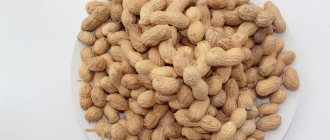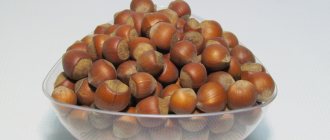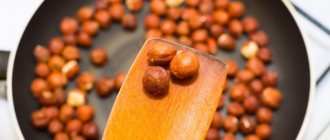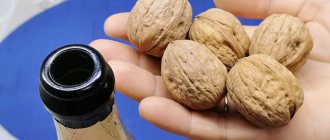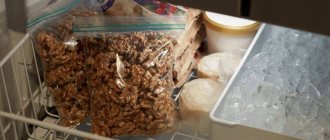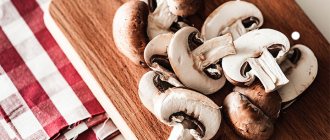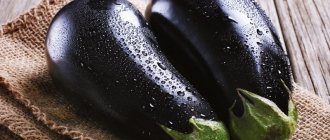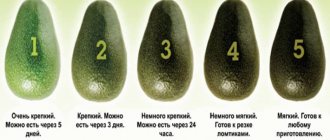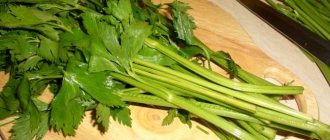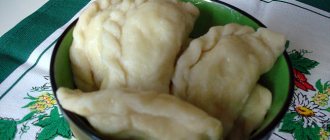The mention of chestnuts evokes a variety of associations for most people, and not always gastronomic ones. In our country, edible chestnut nuts can be found only in the south, and in other places horse chestnut grows, which is unsuitable for food. Moreover, horse chestnut fruits are poisonous, so they can only be admired. Edible chestnuts are sold in supermarkets - they are brought from Krasnodar, the Caucasus, Abkhazia and other places. If you haven't tried this delicious delicacy yet, learning how to cook it is quite easy if you know the secrets and subtleties. Chestnuts are delicious, nutritious and healthy!
How chestnuts became part of gastronomic culture
Chestnut trees were already grown in Ancient Greece and Rome, but their fruits were considered more of a medicine than a delicacy. Chestnuts were used to feed livestock. It was only in the 15th century that people tasted exotic nuts and realized that they deserved to be on the dinner table. However, for a long time chestnuts were the food of the poor, and only a little later they learned to cook delicious dishes from them.
In Japan and China, the first mentions of chestnuts appeared even earlier, long before the advent of rice, and they were prepared in a simple way - fried over a fire. Until now, almost half of the world's chestnuts are eaten by the Chinese.
What types of chestnuts are there?
The most popular varieties of edible chestnuts are seed, American, Chinese and Japanese. They have a green spiky plus and look like tiny hedgehogs, while the inedible horse chestnut has sparser needles. Brown nuts are hidden under the top, and if they look like an onion with a small tail at the sharp end, then the chestnuts are definitely edible - you read that right. Horse chestnut tastes unpleasantly bitter, but the edible fruits are mealy and sweetish.
Raw chestnuts taste like unripe nuts, while cooked fruits taste like baked potatoes with nutty notes. It is believed that the most delicious chestnut is the Japanese one. In terms of satiety, nuts are close to potatoes, rice, bread and other carbohydrate products. It is no coincidence that this tree was previously called bread tree. Due to their neutral taste, chestnut dishes can be prepared with a variety of foods - they simply absorb the taste and aroma of the ingredients present, such as funchose, potatoes and rice.
How to prepare chestnuts
In Europe, there is a good tradition of having picnics in the fall and baking chestnuts on the fire. This delicacy is also sold on city streets, where the fruits are cooked in open roasting pans. They are peeled and eaten hot, washed down with grape juice, beer or cider. The main thing is to pierce the nut shells before baking, otherwise the chestnuts will explode during cooking. Chestnuts are also boiled and steamed, added to soups, sauces, salads, casseroles and side dishes, and stuffed into chicken and Christmas turkey. If you want to save chestnuts until Christmas, you can boil, peel and freeze them.
But the use of chestnut fruits in cooking is not limited to this. The nuts are used to make amazing chestnut flour, which is used to make savory pies and dessert pastries. You don’t even need to add sugar to sweets, because the flour already has a sweetish taste. Chestnut honey and jam, pancakes, biscuits, muffins and cookies are very pleasant. In France, chestnuts are used to prepare a delicious delicacy called maroon glace, for which peeled chestnuts are boiled in sugar syrup and dried until crisp. No less tasty are chestnuts with chocolate sauce and chestnut puree made from boiled nuts with sugar. They say these are real delicacies!
Both tasty and healthy
Chestnuts also have healing properties. They are rich in vitamins C, A, B, potassium, iron and calcium. Nuts reduce fever, treat coughs and cleanse the bronchi, relieve pain, have anti-inflammatory properties and stop diarrhea. Chestnuts are good for digestion and kidneys, while they have a slight diuretic effect. Chestnuts are especially useful for hypertensive patients, as they normalize blood pressure and strengthen blood vessels.
If you have varicose veins, you can alleviate your condition with a chestnut diet. Arthritis, radiculitis, gout - even such serious diseases can be treated if you feast on these useful gifts of nature more often.
Since chestnuts have a low concentration of fat (1 g per fruit), they can be eaten by anyone on a diet. This is what distinguishes this variety of nuts from its “brothers”. If we also take into account that chestnut improves blood circulation, removes excess fluid from cells and removes swelling, this product becomes invaluable in the fight against cellulite. Tinctures are made from chestnuts to burn fat, and anti-cellulite creams are prepared using its oil.
It is better to give chestnuts to children from the age of four or five, since their delicate digestive system may not be able to digest this nut.
How to roast chestnuts
Now it’s time to learn how to cook chestnuts at home. Sort through them and discard bruised, spoiled fruits and nuts with cracked shells. Pour the chestnuts into the water and take only the sunken fruits for subsequent cooking - those that float are not suitable for food, as they are most likely spoiled. Keep the remaining chestnuts in water for 15 minutes, dry with a towel and make cross-shaped cuts on the sharp edge so that the shell does not burst during frying and the chestnuts can then be easily peeled.
Fill a large frying pan with vegetable oil, place the chestnuts in it and fry for half an hour over medium heat with the lid closed. Shake the pan occasionally without opening the lid. Peel the chestnuts immediately, otherwise it will be problematic to do so later. Serve with sugar or salt - it's incredibly delicious!
Summing up
Peeling chestnuts at home is not difficult if you do it correctly. Chestnut kernels are very tasty and healthy; you can use them to prepare various dishes. Plus, these fruits are very nutritious, you can eat a few pieces and get full without overloading your stomach. Even though nuts are high in calories, they can be an excellent part of a vegetarian diet.
I've been buying fresh chestnuts a lot lately and have been trying to find a method to effectively peel them so I can use the chestnuts in my recipes.
I tried a few different ways to peel chestnuts that I found online. After trying the traditional method, cutting the bottom of the chestnut and then boiling or roasting them, I found a way to both peel the outer hard shell of the chestnut and the inner layer (the film) much easier.
Delicious recipe! Fry bell peppers in a frying pan
Using a sharp knife, cut the bottom of the chestnut with a cross, where the inner layer is attached and is difficult to remove. In this way, both layers of chestnut come off quite easily, without unnecessary movements. This method only requires boiling the chestnuts for 7-8 minutes. If the inner layer is still a little sticky, simply toss the chestnut in hot water for a minute or two.
I made a photo tutorial to help you understand exactly what to do. Please don't look at my nails, I've peeled too many chestnuts and they're in dire need of a manicure!
This is the area at the bottom of the chestnut that needs to be cut.
Use a sharp knife. Make an X cut at the bottom of each chestnut.
Warning: Do not cut the chestnut while holding it in your hands, you may cut yourself!
This is what the chestnut should look like after you cut it.
Place chestnuts in boiling water for 7 - 8 minutes.
Remove a few chestnuts from the water and use your fingers to remove first the outer shell and then the inner layer. If the inner layer is difficult to remove, use a sharp knife to help remove it, or put it back in the water for a minute or two.
Remove the outer shell and inner layer.
This is a chestnut without an outer shell, but with an inner layer. I return it to the hot water to soften it a little.
Here are two completely peeled chestnuts.
Once you have peeled the chestnuts, cut off any darkened areas and discard any dark (rotten) chestnuts.
Here are the chestnuts, peeled and ready to use in my recipes!
Chestnuts baked in the oven
This cooking method is even simpler, and you can experience it in your own kitchen. First, sort and wash the chestnuts, removing any that are unsuitable for eating, and then make cuts.
Preheat the oven to 200 °C, setting the convection mode. Place the nuts in a cast iron or ovenproof dish, cut side down, and cook for 15 minutes, then stir in the chestnuts and bake for another 15 minutes. It all depends on what kind of nuts you like - softer or crispier.
Cool the chestnuts, sprinkle them with salt and serve with beer or wine. You can cut the shelled nuts into pieces, add any vegetables, pasta or rice to them, and then season with olive oil and lemon juice.
How to cook chestnuts in a slow cooker
- Prepare the nuts properly (see section “Softening chestnut shells before any cooking method”).
- Spray the fruits with water from a spray bottle.
- Place in the multicooker bowl.
- Set the temperature to 180–200 °C , “frying”, “oven” or “cook” mode for 20 minutes . Or “soup” mode - 35 minutes .
- Close the lid and press “start”.
- Peel the finished fruits without waiting for them to cool.
“Quick” chestnuts in the microwave
Prepare the chestnuts for roasting as described above, and be sure to make cuts. Place the nuts in a microwave-safe bowl, add salt and add a little water - 4-5 tbsp. l. for 10 fruits. Mix well.
Turn on the most powerful mode and cook for exactly 8 minutes. If the chestnuts are too large and the microwave is not very powerful, the cooking time can be increased. Some gourmets claim that nuts in the microwave do not turn out as tasty, but this is not an acquired taste. Try it and decide for yourself!
How to cook chestnuts in the oven
This is perhaps the easiest way to prepare them.
- Prepare the nuts as described at the beginning of the article, that is, soften the shell and make cuts.
- Place them evenly on a baking sheet lined with parchment paper (cut side up if you only made one cut).
- Spray the nuts with water from a spray bottle to prevent them from drying out.
- Place the baking sheet in an oven preheated to 180°C .
- Cooking time - about 30 minutes . If the shell opens, it means the nuts are baked.
Do not overcook the chestnuts - otherwise they will be hard. During the baking process, be sure to 2-3 times , stir them and sprinkle them.
6. It is better to peel the finished fruits while they are still quite hot. When they have cooled down, the skin is difficult to remove. Don't forget to remove all membranes and films.
7. Before serving, nuts can be sprinkled with a little sugar or salt.
Candied chestnuts
This is a very simple and incredibly tasty dessert that will surely take root in your family. Peel 0.5 kg of chestnuts and boil them in water until softened so that they do not lose their shape.
Boil the syrup from 2 glasses of water and 0.5 kg of sugar - after boiling, it should cook for about 10 minutes. Dip the finished chestnuts into the syrup and cook for another half hour. Let the dish brew a little and keep it on the fire for another half hour. The chestnuts should become almost transparent. After this, add 50 ml of rum and transfer the dessert to a beautiful bowl. Decorate the delicacy to your taste and serve to your amazed family and guests.
How to properly peel chestnuts
The traditional cooking method is grilling over charcoal. In this case, the peel bursts and is then easily removed.
At home, you can peel nuts after cooking them:
- in a frying pan;
- in the oven;
- in a saucepan;
- in the microwave;
- in a convection oven;
- in a slow cooker.
As a result of heat treatment, the peel is easily removed. If a film remains on the kernel after this, it must be removed with a knife.
There is another way - using a freezer. Freeze the prepared nuts and then place them in boiling water for a few minutes.
Chestnut flour pancakes with ricotta
Everyone loves pancakes, but chestnut pancakes are exotic for most. But what prevents you from appreciating their delicate nutty taste?
Prepare a dough from 2 eggs, 230 ml of milk and 100 g of chestnut flour, which you can add a little more if the eggs are large. The dough should be homogeneous, without lumps. Leave it on for 15 minutes.
Prepare the filling from ricotta and honey - the amount of ingredients to your taste. Some people like it sweeter, while others can add a little salt and herbs instead of honey.
Fry the pancakes in olive oil, place 2 tbsp on each. l. ricotta, fold in half and place on a plate. Top them with yoghurt, honey or any sauce you like. Chestnut pastries have a pleasant color and delicate texture, and certainly will not disappoint you when tasting.
Chestnut soup "You'll lick your fingers"
This delicious soup is a bit like potato soup, but looks unusual and appetizing.
Boil the meat broth and allocate about 1 liter or a little more for the soup, taking into account that some liquid will boil away during cooking. Chop the carrots and onions into cubes and fry them in vegetable oil until golden brown. Throw 300g of peeled chestnuts from the supermarket and vegetables into the broth, add salt and pepper to taste. Simmer until chestnuts are soft, about 15 minutes.
Blend the soup with a blender, but leave a few chestnuts floating in it. This will make the dish look much more interesting.
Season the chestnut puree soup with 2 tbsp. l. cream and serve with fresh herbs.
What is prepared from chestnuts?
Roasted chestnuts are one of the most popular winter treats in Europe. They are topped with chocolate or other sweet sauces and served for dessert.
But not only desserts are made from these nuts. They also bake poultry and rabbit. They make puree from them as a side dish, with the addition of vegetables or solo, prepare soups...
Boiled chestnuts with coffee sauce
500 g chestnuts
For the sauce: 2 yolks 3 tbsp. powdered sugar 100 ml strong black coffee ½ cup heavy cream 3 tbsp. cognac
Step 1. Cut the chestnuts and boil for about 5 minutes in boiling water. Step 2. Peel and cook for another 20 minutes. Step 3. Separate the yolks from the whites. Beat the yolks, add cream and cognac. Beat again. Add coffee. Step 4. Grind the sauce with powdered sugar, place in a water bath and cook, stirring, until thickened. Step 5. Pour the sauce over the chestnuts and serve.
Chestnut puree soup
1 handful of peeled chestnuts 2 cups meat broth 1 tbsp. flour 1 tbsp. butter ½ cup cream 1 stalk celery Salt and pepper Croutons
Step 1. Pour the chestnuts and chopped celery with broth and simmer for half an hour under the lid. Step 2. Puree everything with a blender. Step 3. Fry the flour in butter and add to the puree. Bring to a boil, add salt and pepper. Step 4. Add warm milk and bring to a boil again. Serve with croutons.
Pork with figs and chestnuts
500 g pork pulp 1 glass of white wine 1 glass of meat broth 2 cloves. garlic 1 onion 1/2 orange (zest) 2 handfuls of peeled chestnuts 4-5 pcs. figs
Step 1. Cut the pork into portions. Marinate in white wine, adding chopped garlic, salt and pepper. Leave it overnight. Step 2. Fry the meat with onions. Add marinade and broth. Simmer for about an hour. Step 3. Remove the zest from half an orange, add to the meat, add chestnuts and figs. Simmer for another 15 minutes.
Lamb with chestnuts
500 g lamb 300 g chestnuts 2 onions 4 tbsp. ghee 1 tbsp. flour ½ bunch of parsley Salt
Step 1. Wash the chestnuts, cut them and cook for about 40 minutes under the lid. Step 2. Drain the water, fill with cold water and leave. Then peel and mash. Step 3. Cut the lamb into small pieces, place in a saucepan with a thick bottom, where you must first heat the oil, and fry until well browned. Step 4. Add finely chopped onion. Fry a little, then add flour and half a glass of water. Stir and cover with a lid. Simmer for 10 minutes. Step 5. Add chestnuts, salt and pepper and remove from heat. Sprinkle with parsley before serving.
